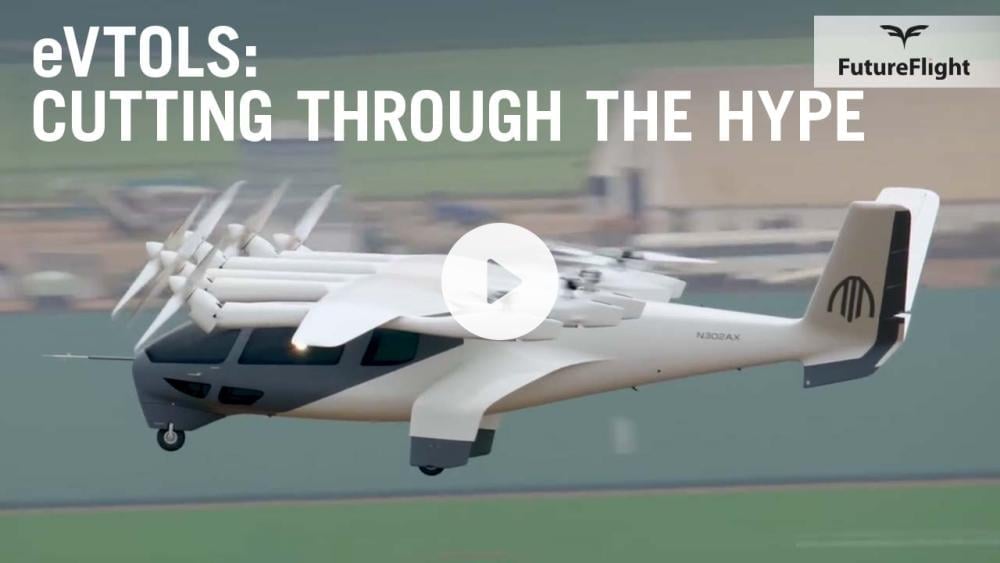|
Aircraft manufacturers have a new choice for sourcing a head-up display (HUD) for their business jet flight decks: Garmin’s GHD 2100. Certified on Textron Aviation’s Garmin G5000-equipped Citation Longitude, the GHD 2100 is a fully capable HUD matched to an Elbit multi-sensor camera system and offering traditional HUD as well as enhanced, synthetic, and combined vision system imagery. The HUD landscape has been dominated by Collins Aerospace, which bought Head-up Guidance Systems manufacturer Flight Dynamics in 1999 and manufactures HUDs for aircraft equipped with its avionics and for Gulfstream jets with Honeywell Epic-based flight decks. Elbit also manufactures HUDs, and Dassault is the primary business aviation customer, having been first to market with a combined vision system (CVS) overlaying synthetic vision system (SVS) and infrared enhanced vision system (EVS) imagery on the HUD. |
|
|
More than 1,000 respondents participated in this year's Business Jet Traveler 2024 Readers’ Choice survey, which asks how and why they fly privately; how they rate their flight providers; and the aircraft they dream of owning. Notably, nearly half of respondents reported they fly more than 50 hours a year on private aircraft and one-quarter plan to move up to whole aircraft ownership from charter or fractional flying. Meanwhile, survey takers named Gulfstream Aerospace as the aircraft OEM with the highest impression, with the company's G500 and G700 being the most preferred aircraft in the large-cabin and ultra-long-range jet categories. |
|
|
It took more than a monster storm and a potentially stifling presidential temporary flight restriction to knock out the 65th Annual NBAA Convention and Trade Show that took place in late October 2012. With Hurricane Sandy bearing down on the northeastern U.S. on the Saturday before the annual gathering, airlines began a chain of flight cancellations that eventually topped 8,000 before the storm made landfall in southern New Jersey on Monday evening. With airlines backing out of the picture, the organization itself found that business aviation came to its rescue. “Most of our staff came in early to set up the show,” said NBAA president and CEO Ed Bolen. But not everyone made it out before the cascade of flight cancellations. “We brought down several key staff and a speaker on a chartered aircraft that left the Washington, D.C. area on Sunday, in the early evening,” he continued. |
|
|
The U.S. National Oceanic and Atmospheric Administration (NOAA) has commissioned Lockheed Martin Aeronautics to supply a pair of its C-130J Hercules utility aircraft equipped for hurricane surveillance missions. The agency announced the contract last week, saying the four-engine aircraft will serve as its next generation of “hurricane hunters.” The new C-130Js are expected to enter service in 2030, replacing WP-3D Orion aircraft that have been deployed in the NOAA fleet since the mid-1970s. The contract, which is funded in part by the 2023 Disaster Relief Supplemental Appropriations Act, covers the aircraft plus the design and installation of specialist equipment needed for their flying laboratory role. NOAA has an option to add more aircraft if necessary. |
|
|
The number of aircraft that fictional spy James Bond 007 can fly is limited only by the imagination of those in Hollywood who write the movie manuscripts, not to mention budgets. We look at 12 aircraft that appeared in the James Bond movies and provide a synopsis of the thrilling scene wrapped around them. Given tight movie budgets, it's not surprising that three of them on the list are single-engine Cessna pistons that you could easily find at a local flight school. |
|
|
Beta Technologies has released images showing some details of the passenger-carrying versions of its family of electric aircraft. The Vermont-based company said the cabins, accommodating five passengers and a pilot, will be available for both the fixed-wing CX300 STOL and Alia 250 eVTOL it has in development. Initially, Beta is aiming to start commercial operations in 2025 with versions of the aircraft designed for carrying cargo and flying medical support missions. The first operator is likely to be express delivery giant UPS in the United Arab Emirates. Passenger-carrying flights would likely be ready to start in 2026, subject to FAA type certification. |
|
|
After spending years and hundreds of millions of dollars building an air-to-ground (ATG) airborne connectivity network to compete with industry pioneer Gogo, SmartSky Networks announced that it “has ceased business operations effective August 16, 2024.” A company statement posted on its website blamed lack of additional financing for the shutdown. Like most in the business aviation industry, an aviation manager in New York was taken by surprise by the shutdown. His company had installed a SmartSky system in the principal’s airplane in February at a total cost of $150,000. “[The] system performance is great,” he posted on Facebook. “[It] blows away Gogo L5. [I’m] not looking forward to this conversation with the owner on Monday.” |
|
|
Expert Cuts Through the eVTOL Hype One thing eVTOL aircraft pioneers don’t seem to lack is self-confidence, with several front-runners saying they will be ready to start air taxi and other services from 2025. To help assess their claims in a more objective way, AIN spoke with Sergio Cecutta, the founder of consulting group SMG. |
|
|
Top Stories This Week on AINonline |
|
|
|
AINalerts is a publication of AIN Media Group, 214 Franklin Avenue, Midland Park, New Jersey. Copyright 2024. All rights reserved. Reproduction in whole or in part without permission is strictly prohibited. |













